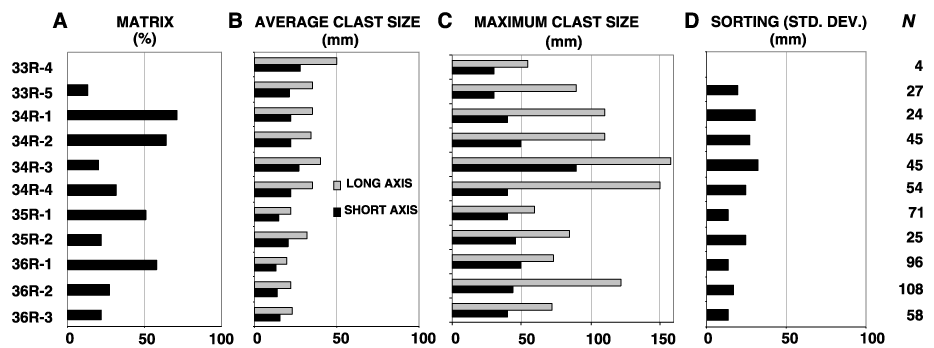Figure F23. Summary of some grain-size characteristics (granulometry) for the volcanic conglomerate (basement Unit 6). A. Percentage matrix in the conglomerate (fine to very coarse sand fraction). Note that the >20-cm-thick sand in interval 183-1137A-35R-1, 98-118 cm, is not included in this analysis. The percentage matrix in each section is generally >25%; however, discrete intervals are granular and contain fewer large clasts. B. The average clast size is relatively constant in the pebble size range throughout the volcanic conglomerate. There are slightly larger average clast sizes in the upper half of basement Unit 6. The oblate nature of the clasts is represented by the long-to-short axis ratios. C. The maximum clast size shows two broad intervals with reverse graded cobbles at the base and more normal graded cobble to pebble distribution above. A >20-cm-thick sand (interval 183-1137A-35R-1, 98-118 cm) sits between these two broad intervals. The oblate nature of the clasts is represented by the long to short axis ratios. D. The sorting is relatively poor with a range in clast size from granule to cobble throughout most of the conglomerate. The standard deviation ranges from 1.4 to 3.2 cm, which is significant compared to the average clast size (2.0 cm × 3.2 cm).

![]()